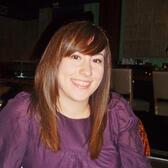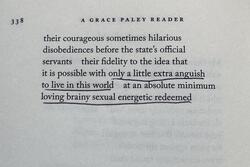Eating Jewish: Mandelbrot (Mandel Bread)
When thinking about what I should write about next for Eating Jewish, I came across Lenore Skenazy’s article entitled “You Say Mandel Bread, I Say Biscotti” in The Forward. In the beginning of her article Skenazy confesses her lack of affinity for mandel bread, a baked good she associates with bubbes and paper lined tins. On the other hand, it’s clear that she is a fan of biscotti, cookies she describes as “the world’s coolest cookies, the supermodels of sweets: tall, thin, Italian, expensive. If they were shoes, they’d be Manolo Blahniks.” By the end of the article, after recounting discussions she had with others concerning mandel bread, Skenazy decides that she will try to give mandel bread another chance and make it her own by dunking it in her Starbucks rather than the traditional accompaniment of tea.
Reading this article made me realize that I hadn’t made mandel bread myself, despite having previously made the very similar biscotti. Of course, my next thought was that I couldn’t be writing a blog about Jewish food without having made these cookies that are beloved by so many. Yet before even making them, I began thinking about their similarity to the well-known biscotti. According to Joan Nathan, it may have been the large Jewish population that once resided in Piedmont, Italy that brought biscotti to Eastern Europe, where it was subsequently adapted and became known as Mandelbrot, which means almond bread. Due to the fact that it was twice baked, this cookie became a standard Sabbath dessert and an easily portable one for those Jews, such as merchants or rabbis, who had to travel.
This Jewish equivalent of biscotti comes together easily, with all the ingredients being mixed together in one bowl. The dough is left to chill in the fridge so the flavors meld and the dough is easier to work with. Following this, it is simply a question of forming the dough into logs, baking them until they are brown, slicing them after their first round in the oven, sprinkling them with a mixture of cinnamon and sugar, and finally baking them again until they turn a deeper brown. Baking these cookies will make your kitchen smell like a mix of almonds and sugar, and it will be hard not to eat them when you take them out of the oven the first time! Yet the final product will be worth the wait, with the mandel bread being crunchy and having a lovely almond taste that is complemented by the sweetness of the cinnamon and sugar mixture that coats one side of the cookie. These are perfect dipped into a hot drink of your choice, whether that is coffee, tea or hot chocolate. Also, because they keep well, they’re great to have around to serve when people may unexpectedly drop by or to simply have for your own snacking pleasure.
I think that homemade Mandelbrot are just as delicious as biscotti and definitely better than any of those cookies advertised as biscotti in many coffee shops. So go ahead, get into the kitchen and make some mandel bread, I promise you that you won’t miss biscotti in the least!
Mandelbrot (Mandel Bread)
Adapted from Joan Nathan’s Jewish Cooking in America.
½ cup vegetable oil
1 cup sugar
3 large eggs
Pinch of salt
2 teaspoons baking powder
2 ¾ cups all-purpose flour
2 teaspoons almond extract (you could add ½ - 1 teaspoon more depending on how pronounced you would like the taste of the almond extract to be. I love this stuff and I would probably add a bit more next time)
1 teaspoon vanilla extract
1 cup chopped almonds (I only used almonds but you could also add chocolate chips or dried fruit)
½ teaspoon cinnamon
-
Preheat the oven to 350 degrees
-
Mix the oil and all but 2 tablespoons of the sugar. Add the eggs to this mixture and mix well after each addition. Add the salt, baking powder, flour and extracts. Mix to bind the dough and fold in the almonds. Cover and place in the refrigerator for a few hours or overnight.
-
Remove the dough from the refrigerator and shape into two long rolls about 3 inches wide. The dough will be sticky, but don’t worry about this because it is supposed to be this way. Place the logs on a greased cookie sheet, flat side down and bake for about 30 minutes or until you see that they are golden brown.
-
Remove the logs from the oven and slice them into 1 inch pieces. Place these pieces wide side down on the cookie sheet and sprinkle with a mix of the remaining 2 tablespoons of sugar and cinnamon (I didn’t use all of this mixture because I thought that the Mandelbrot would be too sweet if I did).
-
Raise the temperature of the oven to 400 degrees and bake the Mandelbrot for 10-15 minutes longer, until they are brown.
Yield: approximately 24 slices.








My grandmother was from Poland. Her kamish bread was a faint orange color and had almonds and white raisins in it. It also had a much larger crumb than tradition mandelbrot. Does anyone have a recipe like this? I would so love to taste this once more.
The English, as you know, are a seafaring nation. They had a problem: during long sea voyages, food tends to spoil. They developed a cement like cracker that today we call hardtack. The Italians had the same problem: they invented biscotti. In a nutshell, that is the difference between Italian and English cooking. We came up with Mandelbrot. Does that put Jewish cooking halfway between the Italians and the English?